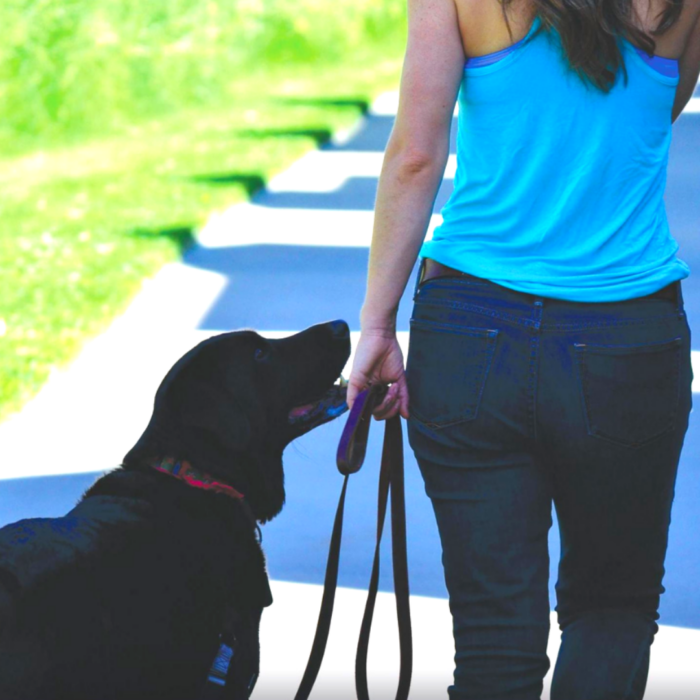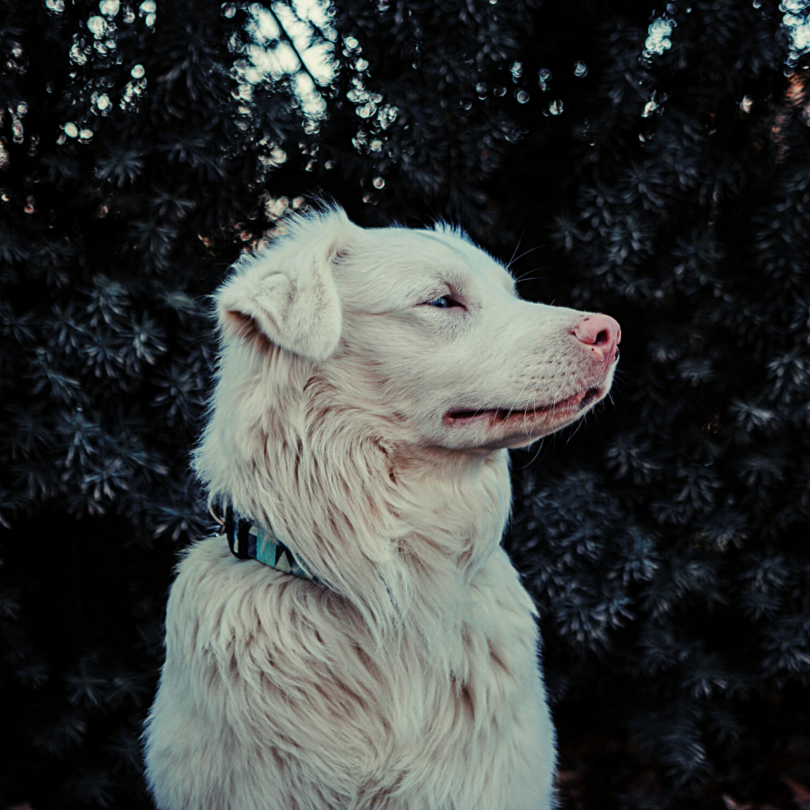In episode 37 of the Paws & Reward Podcast, we’re gonna talk about how to train a deaf dog and dogs with hearing loss. I have zero experience in this area and always send people over to Terrie’s awesome website and to her book: A Deaf Dog Joins the Family! So I figured she would be the perfect guest to have on the podcast. Watch our conversation on my YouTube Channel.
How do you start to train a deaf dog?
First, we need to find a way to mark the dog’s behavior. Most of us use a verbal marker, like “yes” or “good” or a clicker, but that is not going to work when a deaf dog. Terrie suggests using a visual marker that’s quick and recognizable for the dog. It must be consistently paired with the reinforcer, just like the clicker. The sequence would be, 1) the dog does the desired behavior, 2) you offer the visual marker right at that moment, and 3) you reinforce the behavior using food.
Rewarding behaviors like check-ins (when dogs orient themselves to you) is invaluable when you begin to train a deaf dog.
You might also consider using a tactile cue like a light double-tap to remind them to check-in or reorient themselves. This can be especially helpful when in a distracting environment.

What are some common mistakes people make when they begin to train a deaf dog?
A common mistake when training all dogs, not solely deaf dogs, is telling our dog “no”. With deaf dogs, some people are taught to make a specific facial expression that shows the dog our displeasure, however, this isn’t necessary.
Instead, manage the environment and reinforce the behaviors you DO want to see repeated. There are no “bad” behaviors, it’s all just information and the dog is learning what works for them.
Once we reinforce what we like, the dog will continue to do that behavior and the old behavior we didn’t want will begin to fade.
A mistake specific to training a deaf dog is using physical manipulation to force the dog to do something. This could lead to escalation if that makes the dog uncomfortable. It can cause hands to become aversive to your dog and we want to avoid that at all costs.
That’s why rewarding check-ins and having gentle tactile cues can be immensely helpful. Be patient, as with any dog they are learning how to communicate with you. Being consistent is key.
What tips do you have for dogs that are entering their senior years and possible hearing loss?
There are many great reasons to learn about non-auditory communication. Starting with teaching non-verbal cues, reinforcing check-ins, and training a visual marker will help in different situations where your dog may not be able to hear you, as they age.
One cue that’s essential is hand targeting. This is a great way to reorient a dog in the environment without physically manipulating them with your hands. It also helps build the dog’s confidence. Nose targeting is a versatile cue that has many different benefits.
Tip: Using stinky-smelling food to wake up your hard-of-hearing dog is less startling for them than a physical touch or tap.
Terrie Hayward Resources:
- Terrie Hayward’s Website: Positive Animal Wellness where you can find her book and online course
- Why I’ve Never Taught My Deaf Dog the Sign for “No”
- Testament for Targeting by the Pet Professional Guild

